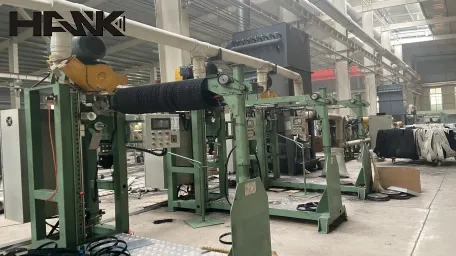- Arabic
- French
- Russian
- Spanish
- Portuguese
- Turkish
- Armenian
- English
- Albanian
- Amharic
- Azerbaijani
- Basque
- Belarusian
- Bengali
- Bosnian
- Bulgarian
- Catalan
- Cebuano
- Corsican
- Croatian
- Czech
- Danish
- Dutch
- Afrikaans
- Esperanto
- Estonian
- Finnish
- Frisian
- Galician
- Georgian
- German
- Greek
- Gujarati
- Haitian Creole
- hausa
- hawaiian
- Hebrew
- Hindi
- Miao
- Hungarian
- Icelandic
- igbo
- Indonesian
- irish
- Italian
- Japanese
- Javanese
- Kannada
- kazakh
- Khmer
- Rwandese
- Korean
- Kurdish
- Kyrgyz
- Lao
- Latin
- Latvian
- Lithuanian
- Luxembourgish
- Macedonian
- Malgashi
- Malay
- Malayalam
- Maltese
- Maori
- Marathi
- Mongolian
- Myanmar
- Nepali
- Norwegian
- Norwegian
- Occitan
- Pashto
- Persian
- Polish
- Punjabi
- Romanian
- Samoan
- Scottish Gaelic
- Serbian
- Sesotho
- Shona
- Sindhi
- Sinhala
- Slovak
- Slovenian
- Somali
- Sundanese
- Swahili
- Swedish
- Tagalog
- Tajik
- Tamil
- Tatar
- Telugu
- Thai
- Turkmen
- Ukrainian
- Urdu
- Uighur
- Uzbek
- Vietnamese
- Welsh
- Bantu
- Yiddish
- Yoruba
- Zulu
Nën . 06, 2024 05:41 Back to list
Understanding the Differences Between Timing Belts and Cam Belts for Engine Performance
Understanding Timing Belts and Cam Belts A Comprehensive Guide
When it comes to the intricate workings of an automobile's engine, two crucial components often take center stage the timing belt and the cam belt. While the terms timing belt and cam belt are sometimes used interchangeably, they serve specific functions that are vital for the optimal performance of an engine. This article explores the similarities and differences between these two components, their significance in engine mechanics, maintenance tips, and the consequences of neglecting them.
What is a Timing Belt?
A timing belt is a vital component in an internal combustion engine that connects the crankshaft to the camshaft. Its primary purpose is to ensure that the engine's valves open and close at the appropriate times during each cylinder's intake and exhaust strokes. This synchronization is crucial for maximizing engine efficiency and performance.
Timing belts are usually made from durable rubber and may be reinforced with fiberglass or other materials to enhance their strength and longevity. Typically, timing belts have a specified lifespan, which can range from 60,000 to 100,000 miles, depending on the make and model of the vehicle. Regular inspections and timely replacements are essential to prevent catastrophic engine failure.
What is a Cam Belt?
The term cam belt is often used synonymously with timing belt, but in some contexts, it may refer to the broader category of belts in an engine that manage the operation of the camshaft. The camshaft plays a significant role in controlling the timing of valve openings and closings. Thus, while all cam belts function similarly to timing belts in certain engines, the terminology might differ based on specific design or manufacturer preferences.
Importance of Timing and Cam Belts
Both timing belts and cam belts ensure the precise timing of engine components, which is critical for optimal engine performance. If the timing fails, the engine could suffer from misfires, reduced power, and in severe cases, severe internal damage. This scenario is particularly true for interference engines, where the pistons can collide with open valves, leading to disastrous outcomes.
timing belt cam belt

Maintenance and Replacement
Maintaining your timing belt is crucial in extending the life of your engine. Here are some tips
1. Regular Inspections Have a professional mechanic inspect your timing belt during regular maintenance checks. Look for signs of wear, fraying, or cracking.
2. Adhere to Manufacturer Recommendations Check your vehicle’s manual for recommended timing belt replacement intervals. Do not exceed these recommendations.
3. Listen for Unusual Sounds If you hear grinding or whining noises coming from the engine, it might be a sign that the timing belt is failing. Seek immediate professional advice.
4. Stay Informed Understanding the specific needs of your vehicle's engine can help you make informed decisions regarding maintenance.
Conclusion
In summary, while timing belts and cam belts may appear interchangeable in casual conversation, they specifically contribute to the engine's functionality and performance. Recognizing their importance, adhering to maintenance schedules, and understanding their role in your vehicle can save you from costly repairs down the line. By ensuring that these vital components are in good working condition, you can enjoy a more efficient and smoother driving experience. Always consult with a trusted mechanic when it comes to maintenance or replacement to keep your engine running at its best.
-
Korean Auto Parts Timing Belt 24312-37500 For Hyundai/Kia
NewsMar.07,2025
-
7PK2300 90916-T2024 RIBBED BELT POLY V BELT PK BELT
NewsMar.07,2025
-
Chinese Auto Belt Factory 310-2M-22 For BMW/Mercedes-Benz
NewsMar.07,2025
-
Chinese Auto Belt Factory 310-2M-22 For BMW/Mercedes-Benz
NewsMar.07,2025
-
90916-02660 PK Belt 6PK1680 For Toyota
NewsMar.07,2025
-
drive belt serpentine belt
NewsMar.07,2025

